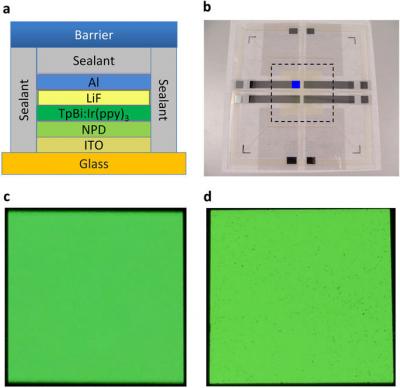Graphene is the world's most impermeable material, and as the material is also transparent, flexible and ultra-thin it makes sense to adopt graphene as an encapsulation layer for next-gen OLED displays. A UK project led by Cambridge University researchers have set out in 2015 to develop such a solution, and the researchers now report that they have demonstrated a viable graphene solution comparable to existing commercial OLED encapsulation technologies.

In its pure form, graphene is permeable to all gases, but real life materials are never entirely pure and defects and holes harm the material's permeability. The new research used ALD and CVD to create large-area high-quality single-layer graphene sheets which were stacked to create a multi-layer coating. The researchers say that a ~10 nm barrier layer that includes 3-4 layers of graphene (with AlOx in between) is an effective solution for OLED displays. The 10 nm layer maintains a high optical transparency (>90 %) and high flexibility.
The new research proves the potential effectiveness of a graphene-based encapsulation for OLEDs, but of course it is too early to know whether a graphene encapsulation can be scaled up and adopted commercially.
The UK project is called Gravia, and its consortium includes the UK CPI, FlexEnable, the University of Cambridge and the National Physical Laboratory.

